- Home
- slideshows
- miscellaneous
- The most gorgeous wildlife photos of 2018 shine a light on nature's bizarre and wonderful beauty
The most gorgeous wildlife photos of 2018 shine a light on nature's bizarre and wonderful beauty
Van Oosten, the grand-prize winner, is a professional nature photographer who runs a photography tour business with his wife. He nabbed this photo of a "golden couple" in the Qinling Mountains of China.

Underwater photographer Tony Wu was tickled to meet this Asian sheepshead wrasse off the coast of Japan's Sado Island. The fish's forehead reveals the "burning desire of a male in love," he said.
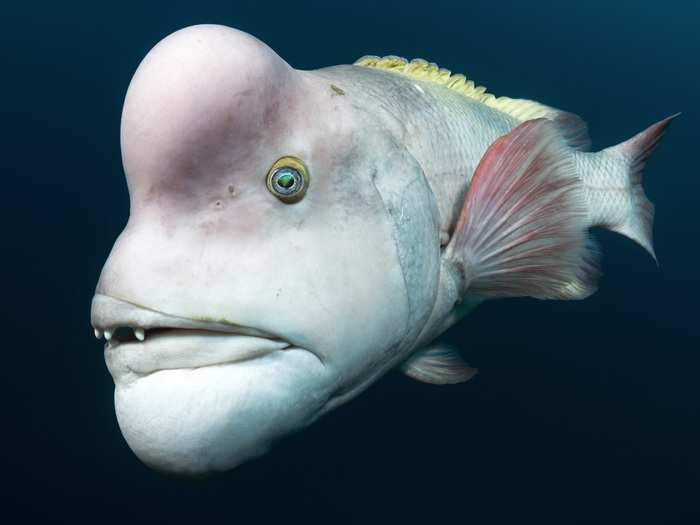
This Asian sheepshead wrasse uses its bulbous red forehead to attract females. If there aren't enough men around, older female wrasse can also turn into males. They grow testicles, show off their big pink foreheads, and act aggressive.
"This," Wu said, "is the face of a fish looking for love."
The image was highly commended in the contest, and the underwater photographer hopes his work inspires others to appreciate and protect the world's oceans.
French photographer Greg Lecoeur found this frogfish surrounded by plastic bits in Raja Ampat, Indonesia.
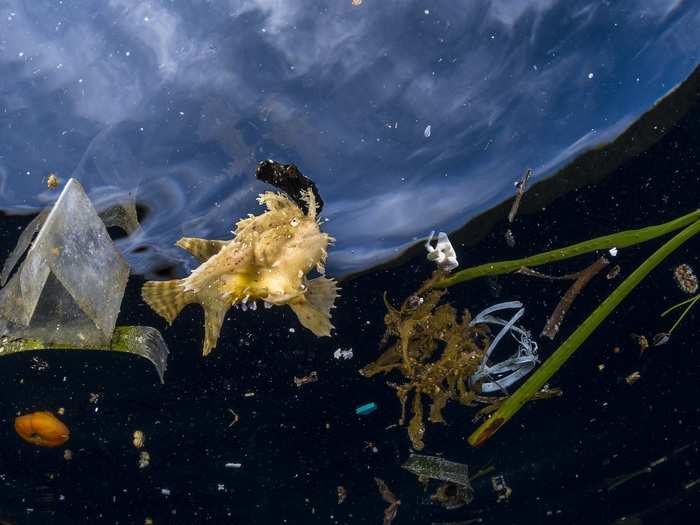
Lecoeur's image was also highly commended.
Normally, the fish thrives in Sargassum seaweed habitats, where it stalks and captures prey. But with plastic now covering the world's oceans in a "seventh continent" of trash, those traditional hunting methods aren't always possible.
More than 90% of the world's plastic never gets recycled, and instead ends up in landfills or out in nature.
Near the top of the world, in Franz Josef Land, Russia, polar bears rule the ice.
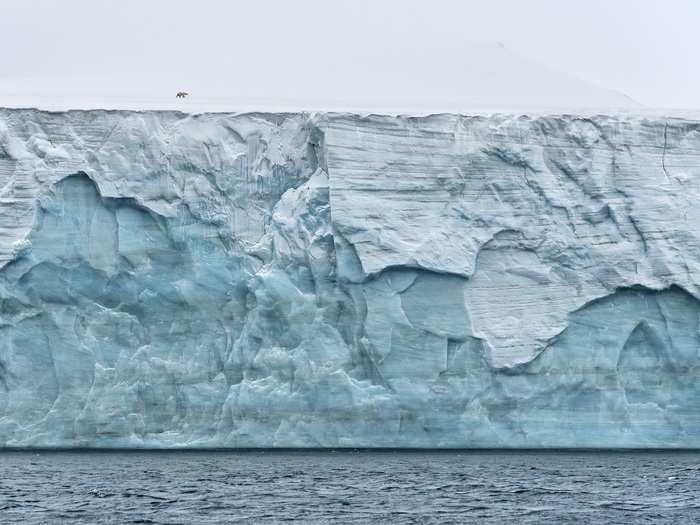
Russian photographer Sergey Gorshkov was highly commended for this shot, which he took at the world's northernmost archipelago, some 560 miles from the North Pole.
When sea ice melts in the summer, polar bears feed on whale carcasses to fatten their 800-pound-plus bodies for the winter.
Photographer Frans Lanting won a Lifetime Achievement Award in this year's contest. This shot shows a watering hole during dry season in Botswana.
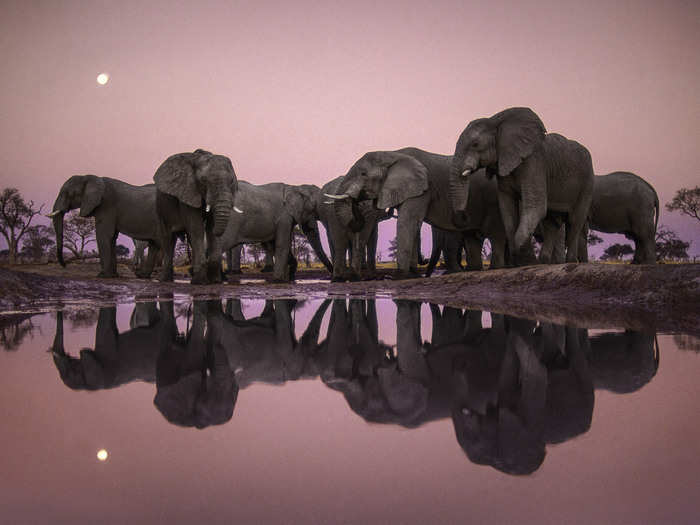
"The image is my homage to the primeval qualities of southern Africa’s wilderness, the grandeur of elephants, and the precious nature of water in a land of thirst," Lanting said.
The photographer has been capturing impressive wildlife shots for three decades.
"I like to get eye to eye with the animals I photograph and portray them as individuals," he added.
In Indonesia, macaque monkeys are put to work in street shows. The animals often work long hours riding bikes or dancing, isolated from crucial social interaction with other monkeys.
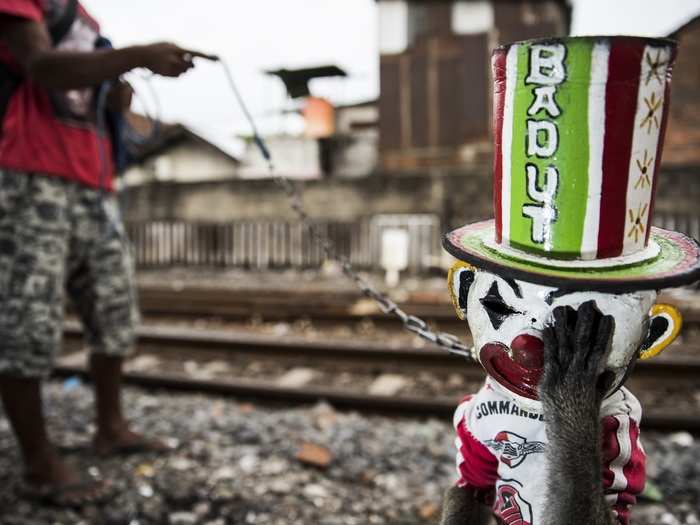
Biologist and wildlife photographer Joan de la Malla snapped this shot of a macaque named Timbul as the monkey raised a paw to adjust an uncomfortable mask.
The photo won the contest's "wildlife photojournalism" category.
Bob the flamingo also spends his life in close contact with humans — he is an ambassador for a Caribbean animal rehab center. The bird is pretty comfortable behind the wheel.
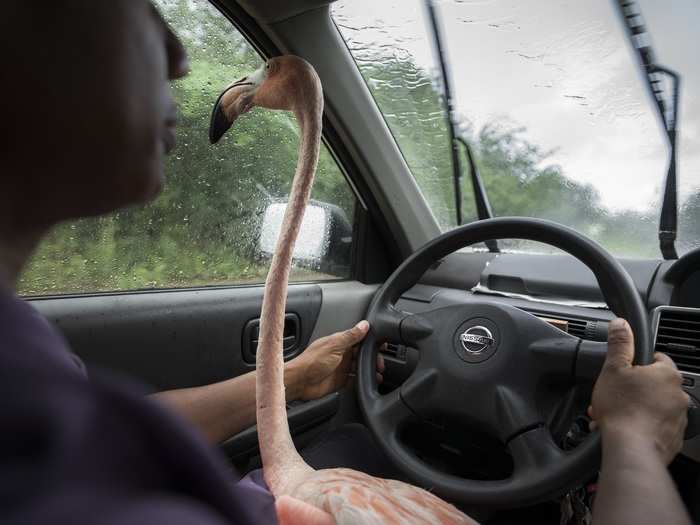
Veterinarian Odette Doest rescued Bob after he flew into a hotel window on the island of Curaçao.
Because of his injuries and his familiarity with people, the bird can't safely return to the wild. So instead, Bob travels around as an ambassador for Doest's conservation charity and wildlife rehabilitation center, called Fundashon Dier & Onderwijs Cariben (FDOC).
Doest's cousin, photographer Jasper Doest, captured this shot of the flamingo sitting in her lap. It was highly commended in the contest.
Like people, animals mourn their dead relatives. This gorilla mother carried, cuddled, and groomed her infant's corpse.
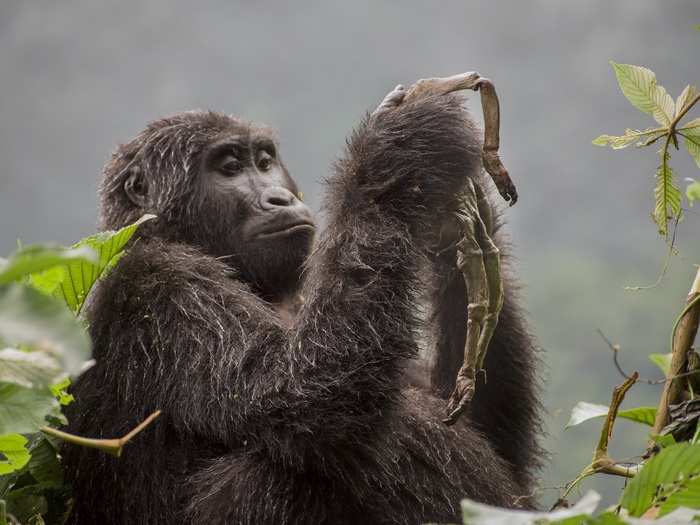
Kuhirwa, a mountain gorilla, lives in Uganda's Bwindi Impenetrable National Park. After a few weeks of sadness, she gave in and started eating the baby's remains.
This shot depicting Kuhirwa's grief was taken by Spanish photographer Ricardo Núñez Montero, who won the contest's mammal behaviors category.
Elephants and dolphins also engage in mourning rituals, stroking dead animals' bones, and keeping their bodies afloat after death.
After climbing 2,300 feet in the forests of Bhutan, setting up eight camera traps, and waiting 23 days, photographer Emmanuel Rondeau finally got a close-up shot of a tiger.
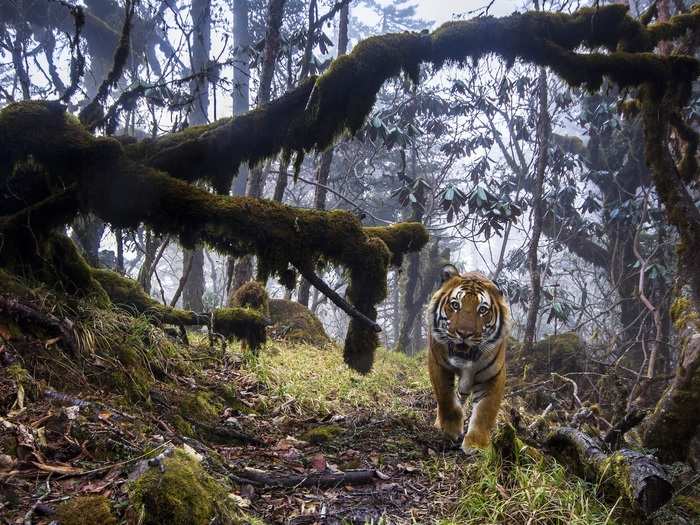
In Bhutan, tigers are making a comeback; the government has set up corridors for the animals to travel from one national park to another undisturbed.
Estimates suggest there are more than 100 tigers living in the wild in Bhutan now, nearly a third more than a decade ago.
"Bhutan is one of 13 tiger countries that committed to doubling the world’s wild tigers by 2022," according to the World Wildlife Fund.
Rondeau's image was highly commended by the contest judges.
Photographer Cristobal Serrano used a drone to spy these seals in one of their favorite resting spots in the Errera Channel of Antarctica.
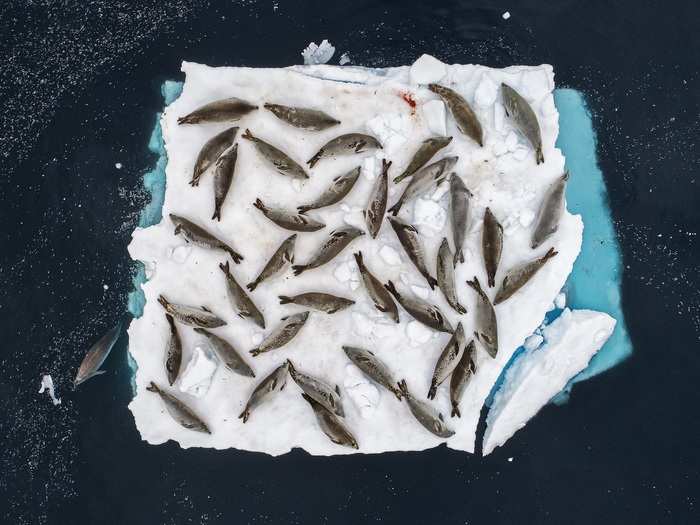
Crabeater seals mate, eat, and sleep atop ice floes like this.
The seals feast on so much krill sheltering under the ice floes that their excrement turns red.
Serrano won the contest's "animals in their environment" category with this image.
Kids also took some impressive wildlife shots this year. Arshdeep Singh, who started taking pictures when he was six, won the 10-and-under category for this shot of a pair of owls.
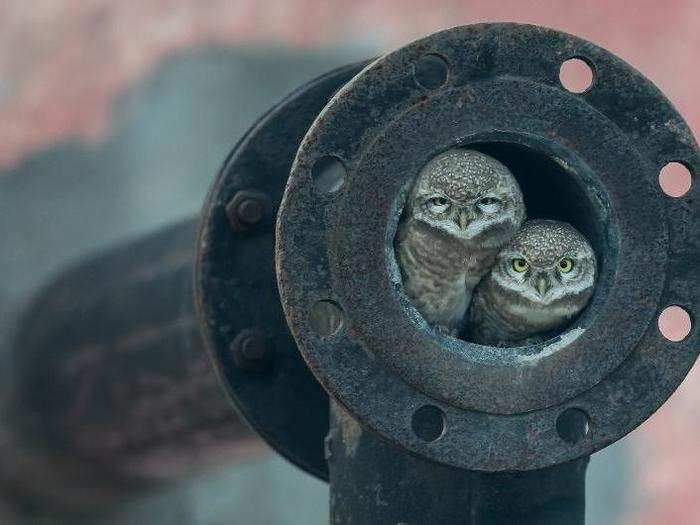
While driving through the city of Kapurthala, Singh spotted these two owls in a waste pipe from the car window. He asked his father to stop the car so he could kneel on the seat and get this shot, resting his camera on the half-open window.
Singh's picture is evidence that the birds are opting for more urban nesting sites as forest cover decreases. Singh hopes his photography might help boost conservation efforts to protect more wildlife.
Seventeen-year-old Cameron McGeorge has been building drones with his dad for five years, in the hopes of glimpsing whales from above like this.
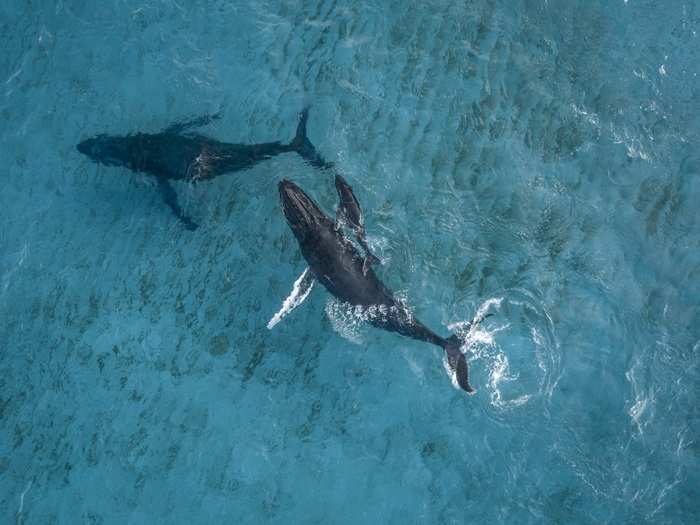
McGeorge's shot shows a humpback whale mother, her newborn calf, and a male suitor out for a cruise near Foa, Tonga.
The three whales are part of an isolated and endangered breeding group called "the Tongan tribe," the Natural History Museum said.
The image was highly commended in the contest.
Carlos Perez Naval won the 11- to 14-year-olds category with this morning shot of a sleepy long tailed duck in Norway's Barents Sea.
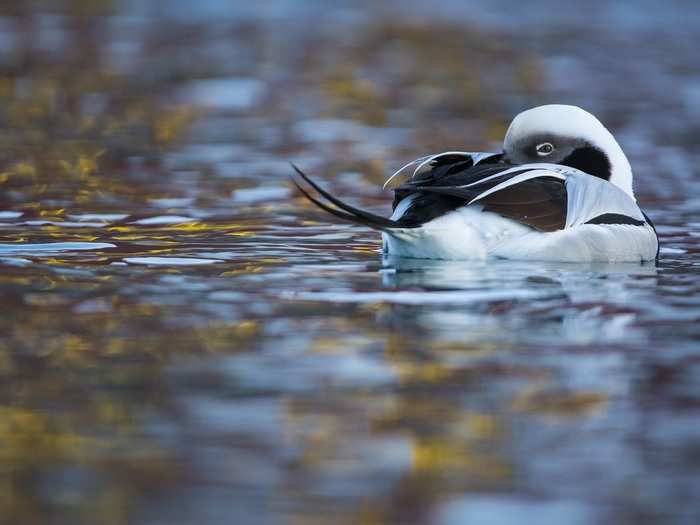
The area is home to one of the largest seabird communities in the world.
Naval, who has been taking pictures since he was five years old, slipped out of his boat and into a floating hide to get this shot.
The grand-prize winner of the museum's Young Wildlife Photographer of the Year contest spotted an extremely elusive animal: an African leopard.
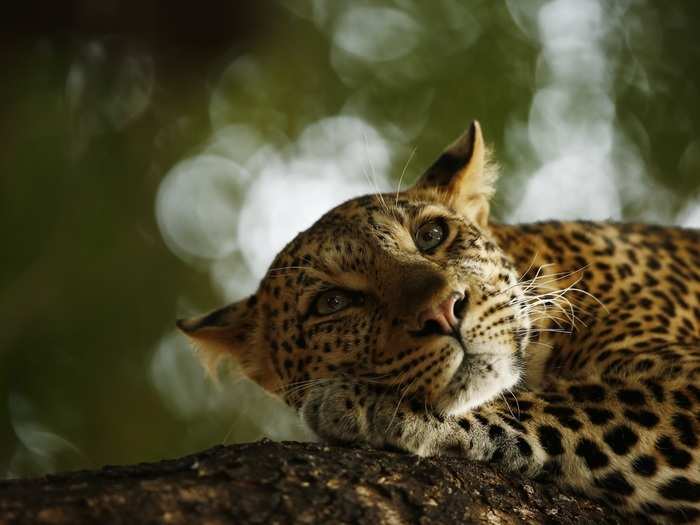
South African photographer Skye Meaker, who's been snapping photos since he was seven, spent hours tracking leopards through the Mashatu Game Reserve of Botswana before he nabbed this shot.
Even though leopards are native to 35 African countries, the nocturnal hunters are notoriously tough to spot.
This female leopard suffered a leg injury, leading guides to name her Mathoja, or "the one that walks with a limp."
Popular Right Now
Popular Keywords
Advertisement